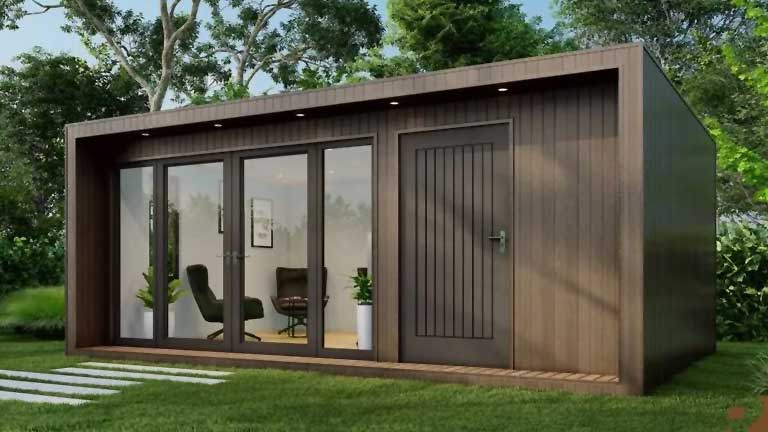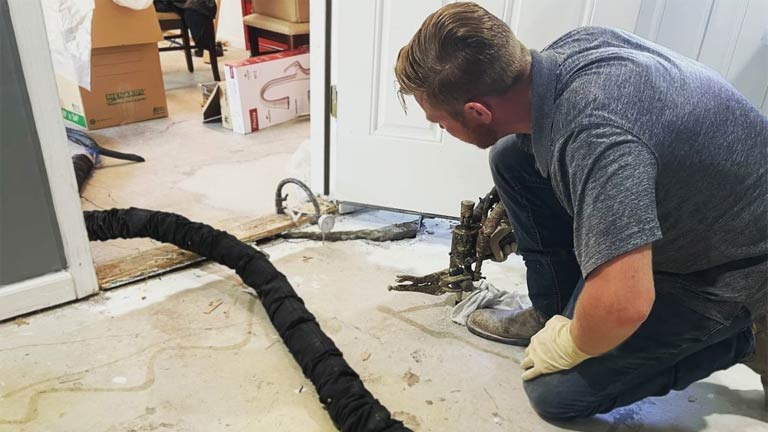
Whether you work from home and don’t have spare office space on your property, have a desire to add square footage to existing office space, or need temporary space for a construction job, while your office is under renovations, or another reason, a shipping container can be an ideal solution.
With so many benefits to using a shipping container as an office and a virtually endless way to customize them to your needs, here are a few tips for converting one into your new favorite spot to work.
Benefits Of Using a Shipping Container as an Office Space
Using a shipping container as an office space comes with a number of benefits, including the ability to last many years when properly cared for.
1. They Are Temporary
Unlike traditional office space, shipping container offices can be either permanent or temporary. This makes them ideal for businesses like construction, or during times you can’t be in your regular space for the short-term (like during renovations). Using a container, you can increase or decrease the amount of office space you have and use depending on your specific needs. When you are done with the container, you can return or sell it.
2. They Are Customizable
Shipping containers are completely customizable, as we will talk about more below. You can add doors and windows, electricity, plumbing, heating or cooling, furniture, and even walls to suit your office needs.
3. They Are Cost-Effective
Shipping containers can be rented or bought depending on the space you need and how long you need it, as well as your budget. Containers can be rented for a shorter period of time, allowing you to avoid a long-term commercial lease you could have to break down the road. Even purchasing a container can be more cost-effective than leasing or buying office space. Plus, they require little in maintenance costs and upkeep.
4. They Are Eco-Friendly
Repurposing a shipping container keeps more containers from having to be produced, and it prevents used containers from going to a landfill.
5. They Are Secure
The steel and other durable materials that make up a shipping container help protect the interior from the elements, including wind, rain, and snow. They also keep out pests and bugs, protecting the space inside. Additionally, you can add features like cameras and locks to ensure security.
How To Convert a Shipping Container into An Office
1. Start by getting planning permission (if necessary)
Shipping containers don’t typically require foundations and are usually classified as temporary buildings, so it’s not generally necessary to get planning permission. However, there are some cases it may be required, especially if you’re planning on installing plumbing or electricity within the container. Check with your local planning authority for any rules or regulations.
1. Prep the site
First, the site needs to be prepared for delivery. Consider the route into the site, and make sure the site itself is accessible to the delivery vehicle. Your container will need a large enough, solid, flat area to sit on, so have the area cleared out and ready. It can be helpful to pour a concrete pad to ensure the container doesn’t sink or shift. If you do this, complete the pour in time for it to cure properly before sitting the container on top.
2. Rent or buy your container
Working with a local shipping container company can be helpful, especially if you haven’t converted a container into an office space before. You can rent or buy the container depending on your short- or long-term needs and budget. Some companies offer completely renovated containers, while others allow you to completely customize the container to your own needs. The container size, door types, and other factors can vary – talk to your local shipping experts to learn more.
3. Customize the container
There are several ways you can customize your shipping container to fit your office needs, such as:
- Installing electricity to support internal lighting, heating, and/or air conditioning. (You can also apply insulation to the walls and ceiling to insulate and make the container more energy-efficient). Just make sure you have a proper power supply correctly installed to avoid blowing a fuse or starting a fire.
- Creating natural light through windows or patio door installation.
- Securing the container with additional security features like cameras, locks, and floodlights to deter intruders and protect your belongings.
- Installing plumbing for a sink, water fountain, or small toilet.
- Making it your own by adding or customizing the flooring, installing shelving units, adding furniture like a desk, tables and chairs, and bookshelves, and giving it a personal touch with another décor like plants, pictures, books, and more.
Tips For Converting a Shipping Container into An Office
If you’re converting a shipping container into an office, a few additional tips to follow include:
- Make sure the container is elevated and on even ground. This allows water to drain underneath to prevent or delay rusting. Regularly check for gaps or holes under or around the container that may fill with water, attract insects, or cause rust. You may want to consider a matt or slab foundation (concrete reinforced with steel) or a stem wall foundation (poured concrete with rebar or CMUs).
- Shipping containers require little maintenance, but it’s important to:
- Inspect the roof regularly
- Treat rust areas immediately
- Lubricate container doors
- Keep the container on a level surface
- Have a plan ahead of time in order to make the most of your space. Don’t wait until the container is delivered to think about where you want it to go and how you want to customize it. Choose items to compliment the container to avoid making it feel small or cluttered.
- Hire a shipping container expert to help you make sure the job is done right. They can help you choose the right size, decide whether to rent or buy, coordinate delivery and even help you customize the interior. They can offer suggestions and recommendations and answer questions you may have about your container.




